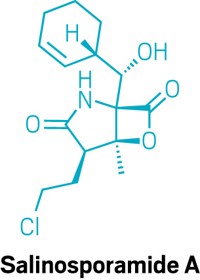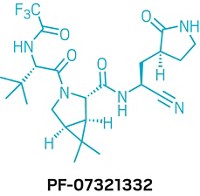Advertisement
Grab your lab coat. Let's get started
Welcome!
Welcome!
Create an account below to get 6 C&EN articles per month, receive newsletters and more - all free.
It seems this is your first time logging in online. Please enter the following information to continue.
As an ACS member you automatically get access to this site. All we need is few more details to create your reading experience.
Not you? Sign in with a different account.
Not you? Sign in with a different account.
ERROR 1
ERROR 1
ERROR 2
ERROR 2
ERROR 2
ERROR 2
ERROR 2
Password and Confirm password must match.
If you have an ACS member number, please enter it here so we can link this account to your membership. (optional)
ERROR 2
ACS values your privacy. By submitting your information, you are gaining access to C&EN and subscribing to our weekly newsletter. We use the information you provide to make your reading experience better, and we will never sell your data to third party members.
Pharmaceuticals
New Cloak May Suit Many Drugs
ACS Meeting News: Novel prodrug strategy improves an experimental HIV pill
by Carmen Drahl
August 26, 2010
| A version of this story appeared in
Volume 88, Issue 35
A new type of temporary molecular mask could help drugs in pill form reach their destinations more efficiently, chemists reported at a poster session at this week's American Chemical Society national meeting in Boston. The cloaked molecules, called amminium salts, arise from attaching an amine to a nitrogen atom on a heterocyclic ring.
Researchers at Bristol-Myers Squibb discovered the new prodrug approach while trying to improve an experimental HIV treatment called BMS-248, which barely reached the bloodstream when taken orally. The amminium version of the drug initially was an unexpected product from an amination reaction intended to make BMS-248 more polar. Inspired by established prodrugs with N–O bonds, BMS chemists decided to try using the amminium salt, which features an N–N bond, as a prodrug—a medication that is administered in an inactive form that gets activated in the body. Sure enough, the compound delivered useful amounts of BMS-248 to the bloodstreams of rats and dogs. Bacteria in the gut cleave the salt's N–N bond to reveal BMS-248.
"In principle, any compound with a nitrogen-containing heterocycle can be aminated, and the amminium salt, provided that it is chemically stable, could be used as a potential prodrug," said Alicia Regueiro-Ren, a principal scientist in virology chemistry at BMS, who presented the work on Wednesday evening in the Division of Medicinal Chemistry.
"I have not seen this type of prodrug approach before," said Valentino J. Stella, a prodrug expert at the University of Kansas. Gut bacteria vary between species and between people, so it will be interesting to see whether these differences affect the efficiency of prodrug breakdown, he notes.
The team doesn't anticipate dramatic variations in gut bacteria, said Regueiro-Ren. "However, gut microflora can be sensitive to antibiotics," so in the future it will be important to further evaluate the prodrug technology while considering potential interactions with antibiotics, she said.






Join the conversation
Contact the reporter
Submit a Letter to the Editor for publication
Engage with us on Twitter